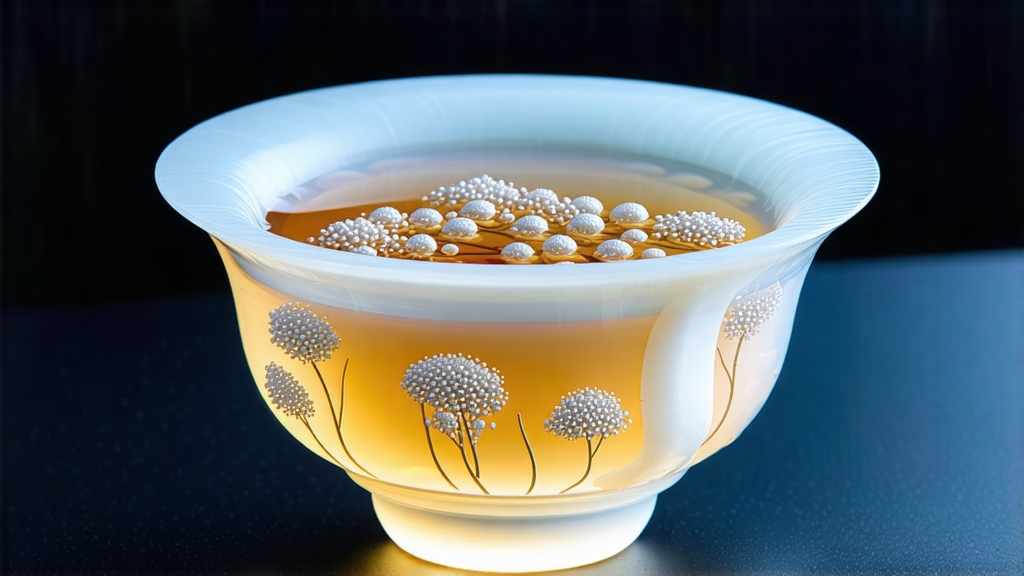
White tea is the most whispered-about category in the vast library of Chinese tea, and within that hush Silver Needle—Bai Hao Yin Zhen in Mandarin—occupies the very first, most hushed chapter. To the uninitiated it can look almost too simple: a handful of pale, downy buds that seem to have wandered off a camellia bush and fallen straight into your cup. Yet every silky strand carries thirteen centuries of recorded history, a micro-climate that begins at the sea and ends in granite mountains, and a craft so restrained that a single impatient hour can collapse an entire spring’s harvest into flat, lifeless straw. Understanding Silver Needle is therefore less about learning a recipe than about learning how to listen to silence.
History: from imperial elixir to maritime ballast
The first verifiable tribute entry appears in 1796, when the Fuding county magistrate dispatched “small buds silvered by morning dew” to the Jiaqing Emperor. Court physicians praised the liquor for “cooling the sovereign fire,” a Taoist phrase for reducing inflammation, and within two decades the leaf had eclipsed the better-known Song-luo green tea from nearby Anhui. By the 1850s Amoy (modern Xiamen) traders were loading compressed crates of Silver Needle as ballast in the holds of clippers bound for Batavia and London; the tea arrived salt-kissed, which paradoxically mellowed its tannins and endeared it to Dutch apothecaries who sold it as “Pekoe Silver” for twice the price of Keemun. Thus the same buds once reserved for the Son of Heaven became one of China’s first teas to circle the globe, a quiet stowaway that would later inspire the white-tea blends of Ceylon and the Nilgiris.
Terroir: where the East China Sea meets 600-million-year-old granite
Authentic Silver Needle is produced in only two micro-zones: the coastal plains of Fuding and the higher granite ridges of Zhenghe, both in northern Fujian. The East China Sea lies only 30 km away, pushing cool, iodine-laden fog inland every dawn; by midday the sun reflects off pale granite outcrops, creating a 10–15 °C diurnal swing that forces the tea bush to store amino acids in its unopened buds. The soil is a coarse, acidic laterite poor enough in nitrogen to discourage leaf expansion yet rich in potassium and fluoride—hence the buds’ signature downy coat, an evolutionary sunscreen that also happens to be packed with antioxidant catechins. In Fuding the dominant cultivar is Fuding Da Bai (“Big White”), whose buds can reach 3.5 cm and swell with l-theanine, while Zhenghe prefers the smaller, more aromatic Zhenghe Da Bai; connoisseurs often describe the former as “orchid milk” and the latter as “quince snow.”
Plucking: the lunar calendar in human hands
Official guidelines stipulate only two picking windows per year—the first three days after Qingming (early April) and, in rare warm seasons, a second flush just before Guyu (late April). Buds must be taken at dawn, before the sun climbs above 15 ° elevation, because stronger light activates polyphenol oxidase and reddens the tip. Experienced pickers use a thumbnail-only technique: index finger steadies the twig, thumb nail shears the base, and the bud is flicked into a bamboo creel lined with banana leaf; any pressure bruises the cells and triggers oxidation. A top picker gathers barely 500 g fresh buds in a morning, which will shrink to 100 g after drying—reason enough for Silver Needle to command higher gram-prices than many single-estate Darjeelings.
Craft: the art of doing almost nothing
Unlike green tea, Silver Needle is never pan-fired; unlike oolong, it is never shaken; unlike pu-erh, it is never microbially ripened. Its manufacture is a two-step meditation: withering and desiccation. Fresh buds are first spread one layer thick on bamboo trays set 40 cm above the ground so that air can circulate. For the next 36–48 hours the master tea maker becomes a meteorologist, adjusting window slats, hemp curtains, and occasionally charcoal braziers to keep the ambient temperature between 20–25 °C and relative humidity at 65–70 %. The goal is to let moisture